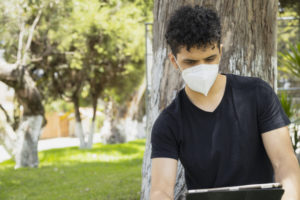Social Emotional Learning (SEL)
Educational leaders recognize that healthy relationships, social and emotional well-being, empathy, and support are as central to a school’s academic responsibilities, especially during remote and hybrid instruction. Social-emotional learning is also a key component of equity. Incorporating strategies for building students’ social and emotional competencies will help students reach their full potential.
COVID-19 has affected the mental health of all Americans and many adult members in school communities are dealing with the same anxiety and stressors the students face. Districts and schools must ensure that there is support for the social-emotional well-being of staff and families.
 This guide uses the definition of social and emotional learning from the Collaborative for Academic, Social, and Emotional Learning: “Social and emotional learning (SEL) is the process through which children and adults understand and manage emotions, set and achieve positive goals, feel and show empathy for others, establish and maintain positive relationships, and make responsible decisions.”
This guide uses the definition of social and emotional learning from the Collaborative for Academic, Social, and Emotional Learning: “Social and emotional learning (SEL) is the process through which children and adults understand and manage emotions, set and achieve positive goals, feel and show empathy for others, establish and maintain positive relationships, and make responsible decisions.”
Overall Findings
Districts, school leaders, and teachers share the belief that SEL is a critical need. They also see the need to complement SEL with mental health supports for students and families who are showing signs of trauma.
While there is strong recognition that incorporating SEL into remote or hybrid classrooms is an essential priority, it needs to become universal:
Objectives
Equity Priorities
- Engage all members of the school community through various means of communication and outreach about SEL. Translate all communications into the languages your students and families speak fluently. Be sure to accommodate families’ different schedules, levels of access to technology, and learning or communication styles.
- Given the disproportionate impact that COVID-19 and the shift to remote learning has had on Black, Latinx, and low-income students, these students need to be prioritized.
- Recognize that while SEL is pivotal to well-being, it is also important to use trauma-informed techniques and access to mental health services to help cope with underlying causes of need, such as poverty, neglect, abuse, and depression.
